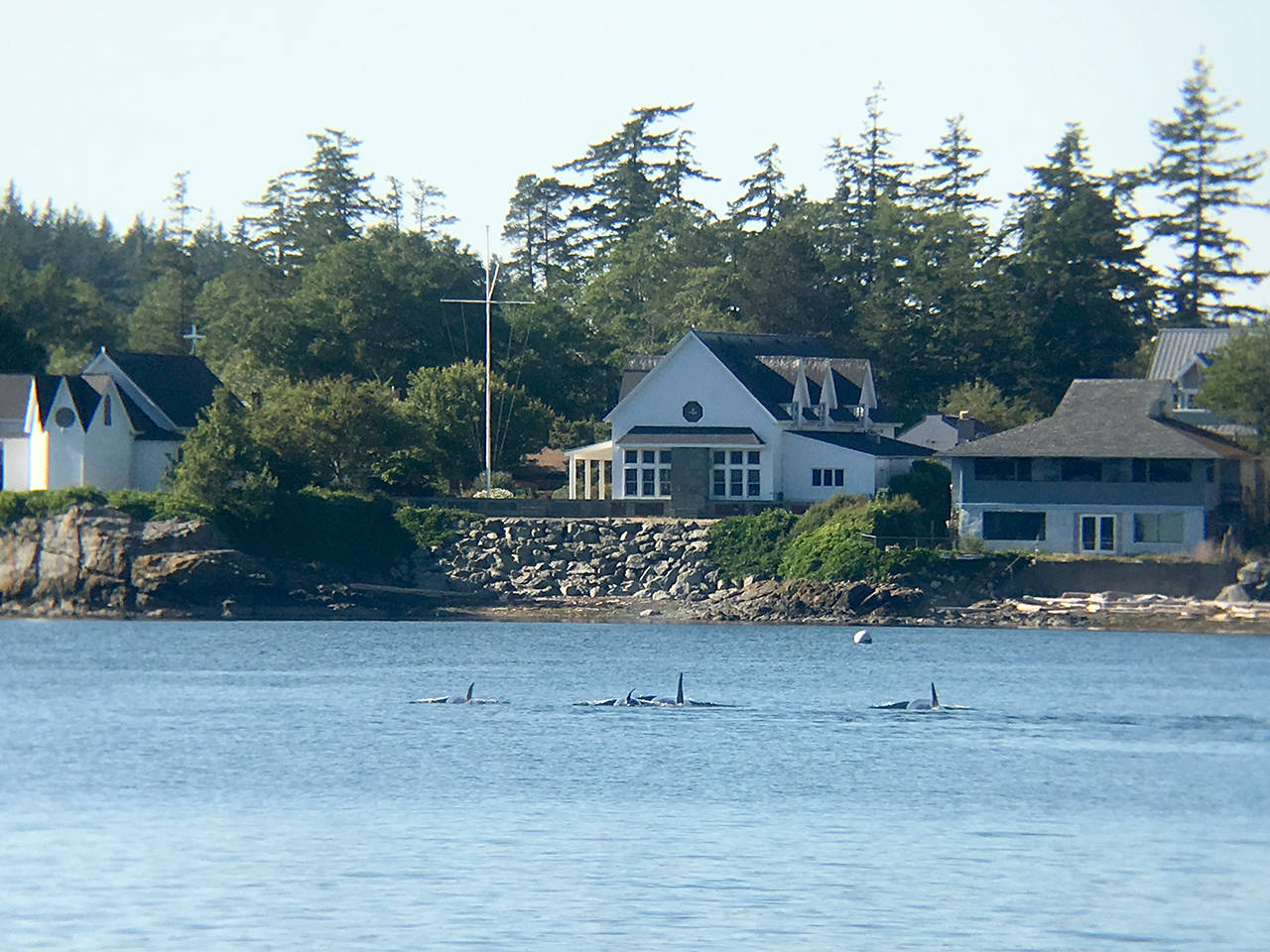The village of Eastsound was treated to a rare sight on the 4th of July when a few transient orcas swam through the sound.
“This is the first time I have ever heard of an Orca that close to town and only the third time I have seen them near Rosario,” said Deer Harbor Charters Captain Cameron Fralick, who was able to snap a few photos of the whales with his phone. “We picked them up around Rosario and watched them take a tour of Ship Bay, Crescent Beach, Madrona Point and Indian Island.”
The occurrence is likely to become more common, however, given the transient orca population is steadily growing. The Washington Department of Fish and Wildlife did a study in June 2015 titled, “Periodic Status Review for the Killer Whale in Washington,” that showed the population of the transient whale population to be increasing.
“The west coast transient population has shown considerable growth since the 1970s in response to the recovery of its marine mammal prey base, and is now estimated to number more than 500 whales and be near its carrying capacity,” said the study. “[Their] diet is comprised of a variety of marine mammal species and squid. Harbor seals (Phoca vitulina) represent about half or more of the prey captured or attacked in British Columbia, Washington, and Southeast Alaska.”
Harbor seals, which were once on the brink of extinction due to being over-hunted, now are the most common mammal in the region. The Salish Sea is said to have the highest population of harbor seals in the world, according to NOAA.
“As the seal population has increased, the transients are coming in more,” said Ken Balcomb, founder and senior scientist for the Center for Whale Research. “The past couple years it’s becoming more frequent; now it’s almost daily.”
The transient orcas eat the seals, while the resident orcas are in competition with the seals for salmon. A study from Canada’s NRC Research Press (https://goo.gl/GB2cqJ) on predation of Chinook salmon found that harbor seals were ultimately more impactful predators than the orcas.
“ … Although harbor seals likely consume less Chinook salmon biomass compared to fish-eating ‘resident’ killer whales, seals consume many more Chinook salmon in terms of numbers of fish,” said the study. “The selectivity or size preferences of the two species are very different; however, the Chinook salmon in pinniped diets are almost entirely smolts, so when delayed effects of Chinook salmon maturation are accounted for, predicted impacts of seals on future adult salmon returns are potentially double the annual consumption by killer whales.”
This correlation is likely one of the reasons, apart from those of which are human-caused, that the resident orca population is in decline. While harbor seals maintain their abundance, the transient orcas remain to eat them.




